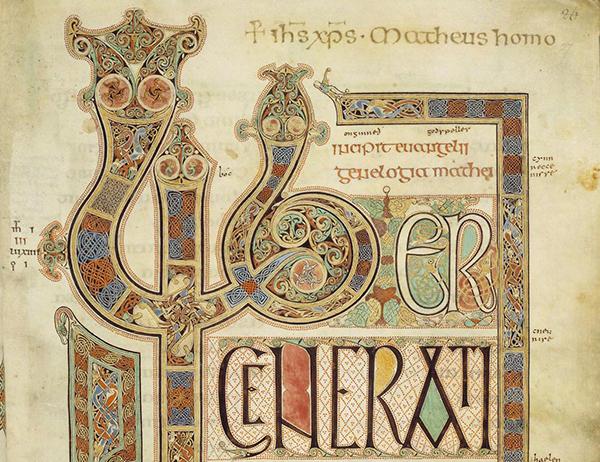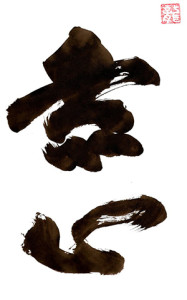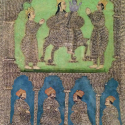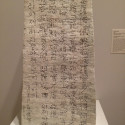I’m not talking about writing as in prose or poetry. Whether some hack poet is an artist is a question for another blog. Rather, we’re focusing on the very letterforms that visually make up a piece of writing. This blog is dedicated to the nuances that the letterforms contribute to written communication, but there are times when letterforms are admired as objects of art—all meaning aside.
For example, the exquisite Book of Kells, as a product of the medieval scriptorium, was created in a preindustrial factory. Monastic scribes replicated books as a means to spread and conserve knowledge, and the pages they copied just so happened to be extremely beautiful, as seen in the image above.
Another example of beautiful writing comes from the Zen tradition of Hitsuzendo—the art of the brush. Hitsuzendo teaches that true art is made without the mind—in a state called mu-shin (literally: “no mind”). This is only possible when a person acts intuitively, not intellectually.
When we don’t create writing by hand, we do it by machine. The words in every book, magazine and website we read have been designed by typographers—in all cases, at least some thought has been given to the display of the letterforms. But rarely do we consider this art.
Of course, in some cases, typeset words are incredibly beautiful. Just check out http://ilovetypography.com, for example. But in the grand scheme of things, artful typography is few and far between. It’s highly unlikely that a normal person would crack open a book and say, “Just look at this font!” or load their Facebook page and be taken aback by the kerning.
Why is this? Typography is laden with rules. It’s rationalized and calculated. In general, it stresses usability over beauty. Just check out Robert Bringhurst’s The Elements of Typographic Style and you’ll see what goes into good type.
As I see it, handwriting is generally made with mu-shin, while typography is generally made with the intellect. Writing made on a machine is less likely to be beheld as an object of art, while writing made by hand is more likely. When we type something in the status box on Facebook, we don’t think of the letterforms as beautiful—we’re wholly focused on the message. But when we see someone who has really nice handwriting, we can easily be dazzled by the forms.
As with anything, this is a theoretical divide; in practice, the picture is less clear. A very adept typographer, for example, may act with mu-shin, while a not-so-adept calligrapher may write with intellect. But on a whole, handwriting just has a lot more heart. This is probably related to the paradigm of selection versus creation discussed by Amalia Gnanadesikan in Chapter 14 of The Writing Revolution, which I’ve written about before.


 Follow
Follow

